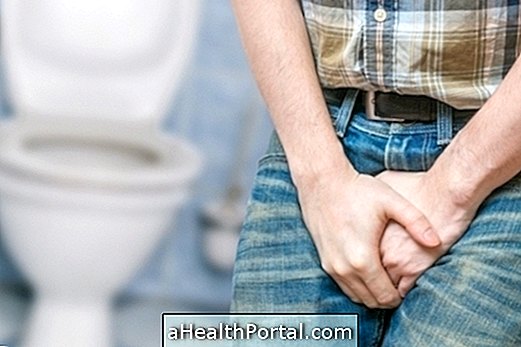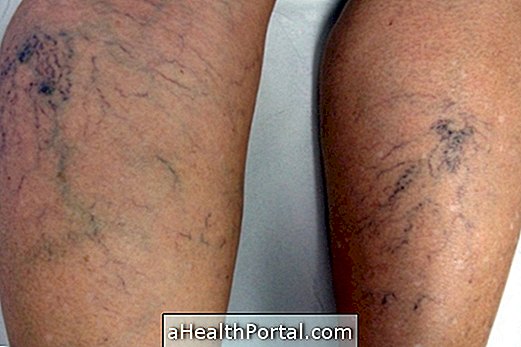Stress urinary incontinence is easily identified when involuntary urine leakage occurs by making some effort like coughing, laughing, sneezing, or lifting heavy objects, for example.
This usually happens when the pelvic floor muscles and the urinary sphincter are weak and therefore more common in the elderly. However, problems in the spinal column or brain that can change signals sent to the muscles can also be at the origin of this type of incontinence.
Often, people with this problem end up isolating themselves and avoiding social interactions since they are afraid of smelling urine. However, there are some forms of treatment that help reduce the frequency with which incontinence episodes develop and may even stop involuntary loss of urine.

What can cause incontinence
Stress urinary incontinence occurs when there is a weakening of the sphincter or muscles that hold the bladder and this can have some causes such as:
- Multiple births : women who have passed through labor several times may have more dilated and injured pelvic muscles, making it difficult for the sphincter to contain urine in the bladder;
- Obesity : overweight causes more pressure on the bladder, facilitating the exit of urine;
- Prostate Surgery : Men who have had to remove the prostate have a higher risk of developing stress incontinence because minor injuries to the sphincter or sphincter nerves may occur during surgery, reducing their ability to close and hold urine.
In addition, people with illnesses that can cause frequent coughing or sneezing also have an increased risk of incontinence, especially with aging, as muscles weaken and are not able to compensate for pressure on the bladder. The same is true for high impact sports such as running or jumping rope, for example.
How to confirm the diagnosis
The diagnosis of stress urinary incontinence can be made by a general practitioner or urologist through symptom assessment. However, some tests such as bladder ultrasound can also be done to assess the amount of urine when the urine loss episode occurs, making it easier to choose one form of treatment.
How is the treatment done?
There is no specific treatment for stress urinary incontinence, and the doctor may choose various forms of treatment, such as:
- Kegel exercises : can be done daily to strengthen the pelvic floor, reducing the frequency of incontinence episodes. Here's how to do this type of exercise;
- Decrease the amount of water ingested : it should be calculated with the doctor to avoid excessive formation of urine, but without causing dehydration of the organism;
- Doing bladder training : It is time to go to the bathroom in order to accustom the bladder to empty at the same time, avoiding involuntary losses.
In addition, making some dietary changes can also help in cases of incontinence. Watch a video of our nutritionist on nutrition in these cases:

Although there are no medications specifically approved for incontinence, some doctors may recommend the use of antidepressants, such as Duloxetine, which reduce stress and anxiety by reducing contraction of the abdominal muscles and relieving pressure on the bladder.
Another option for cases that do not improve with any of the techniques is to have surgery for incontinence in which the doctor repairs and strengthens the pelvic muscles. Learn more about this type of surgery and when to do it.





















